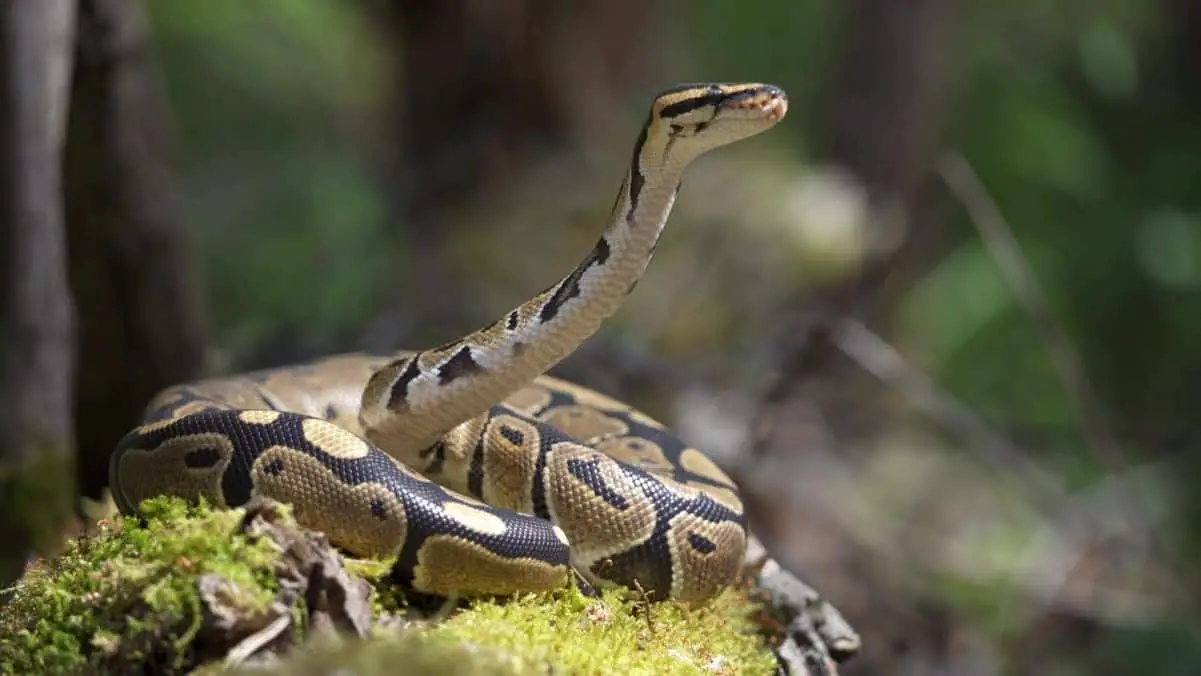Creating the perfect habitat for your ball python tank can be a bit of a balancing act. You want to impress your slithery friend by replicating their natural environment, but also make sure they don’t fall ill from environmental hazards. Can humidifier for ball python?
That’s why keeping a close eye on temperature and humidity levels is key to keeping your ball python tank happy and healthy. Neglecting these factors could lead to serious health issues, so it’s important to be extra careful.
If you’re a snake owner, you know that your slithery friend can’t regulate their own body temperature like we can. This means that your python’s own body temperature is always the same temperature as the environment it’s in.
But don’t worry, there’s a solution! To keep your ball python feeling its best, you’ll need to create a temperature gradient in its vivarium. This means setting up a hot end and a cool side and a cold end so your ball python requires and can move between them depending on how it’s feeling. With some careful planning, your snake can bask in the perfect temperature all day long.
Discover the secrets to designing a comfortable abode for your ball python! Our comprehensive guide delves into everything from the ideal temperatures and humidity levels to the most practical enclosure setups.
We’ve left no stone unturned in our pursuit of the perfect habitat for your slithery companion. Dive in and unlock the knowledge you need to create a cozy and enjoyable home for your ball python.
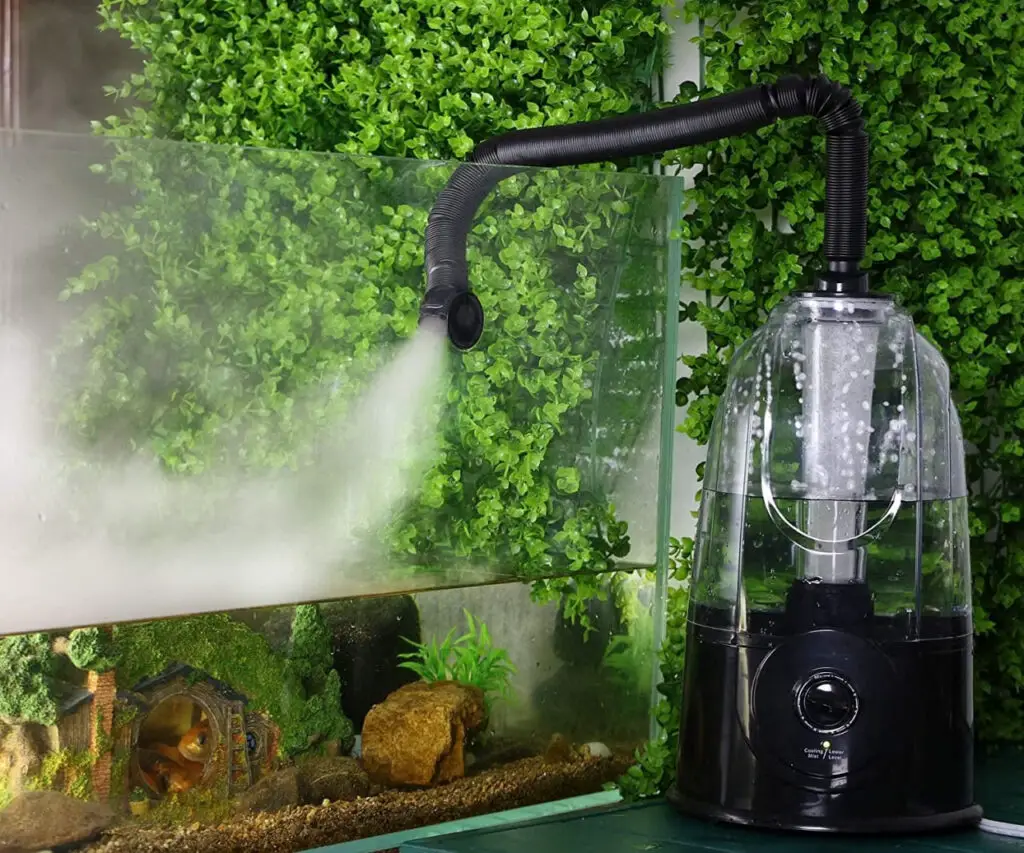
What Temperature Is Too High for a Ball Python?
As a python owner, it is crucial to maintain the proper temperature in your snake’s vivarium. When it comes to warm temperatures, it’s essential to ensure that the temperature ranges from 90 to 92 degrees Fahrenheit. Anything beyond 92 degrees can be incredibly hazardous and puts your pet snake at risk.
One important thing to note is never to place the vivarium close to a window or in direct sunlight, as this can cause overheating and ultimately the death of your pet. Regularly monitoring the temperature and humidity inside the enclosure should be done to ensure that your snake is healthy and happy. Remember, a proper environment goes a long way in keeping your pet snake healthy and living a long life.
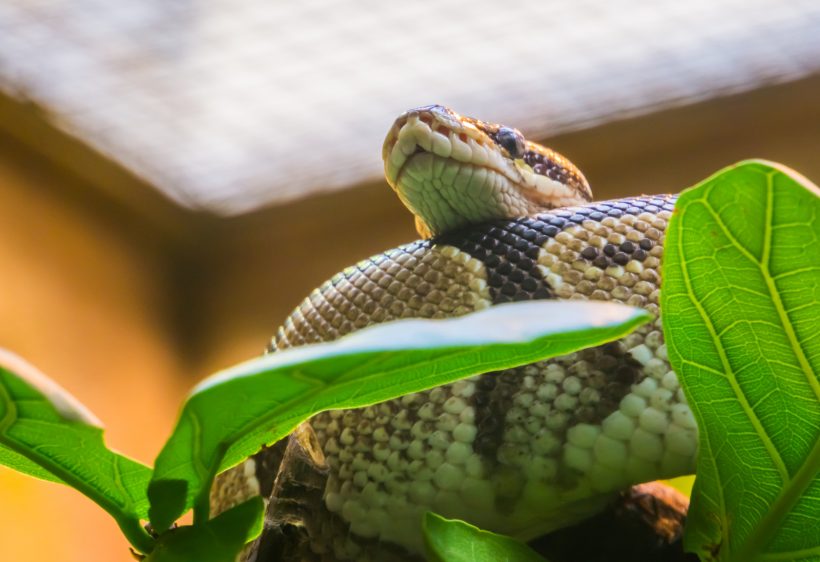
As a responsible ball python owner, knowing the appropriate temperature for your pet during the day and at night is crucial. While the cool end of the vivarium should be around 80-81F during the day, it’s important to monitor the temperature at night as well. Depending on the room’s temperature, you may be able to switch off all heat sources.
However, the temperature should never go below 77F; otherwise, you’ll need to leave a heat mat on 24/7. To ensure your snake’s ultimate comfort, aim for a warm side temperature of 86-87F and a cool side of 76-77F once night falls. Keep your ball python healthy and happy with the right temperature regulation.
Heating Your Ball Python’s Enclosure
Keeping your pet Ball Python’s enclosure at the right temperature is essential for their health and well-being. There are various means to heat the enclosure, but it’s crucial to maintain a temperature gradient to let your pet move and regulate its body temperature.
Avoid using hot rocks as they can cause severe burns and other damages to your ball python’s tank. Instead, opt for safer alternatives using common materials like heat mats, paper towels and tapes. You must choose the right heating source for your Ball Python’s enclosure to ensure its comfort and health. Remember, a happy and healthy Ball Python is a joyful addition to your family.
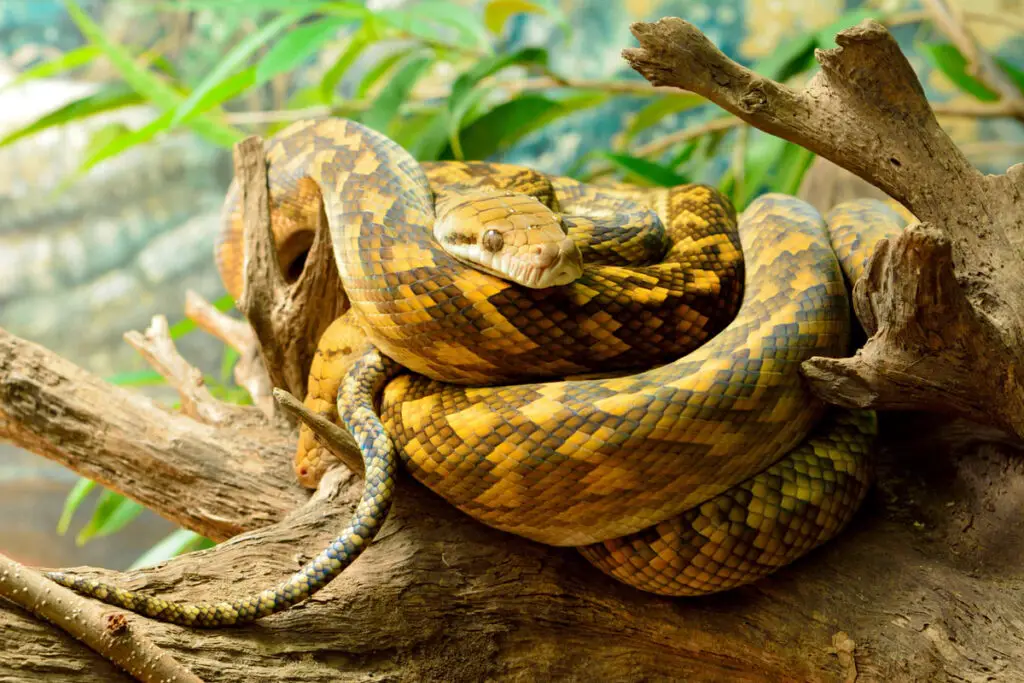
Why does my Ball Python need a Humidifier?
Ball Pythons are fascinating creatures that come from the warm and tropical sub-Saharan Africa region. These snakes thrive in habitats that are dry and heathful, such as prairies, scrublands, and sparse forests. However, they also require ample hydration to prevent dehydration, which can be achieved by using distilled water or a humidifier.
The Ball Python’s skin is particularly sensitive and requires moisture to keep it healthy and free of irritation. So, if you’re looking to keep a Ball Python as a pet, be sure to provide them with water dish the right amount of humidity they require to maintain their health and well-being.
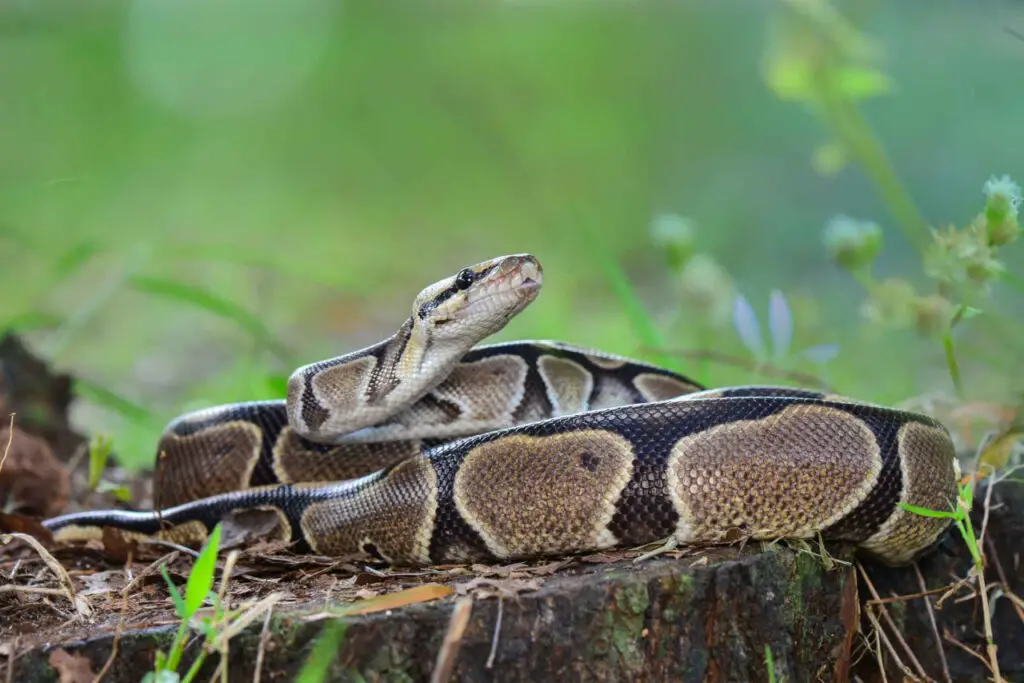
Capacity of tank
Ball pythons require specific humidity levels to thrive, making a humidifier a crucial addition to their enclosure. While installing a humidifier on a water tank is common, it’s important to consider the tank size when choosing an air-conditioned humidifier for ball python.
The more significant the tank, the higher humidity and the longer your system can run, meaning fewer refills will be required. Refilling the humidifier multiple times can be a hassle, so selecting a humidifier with a larger storage tank is a wise investment. With the proper humidifier, your ball python can enjoy a healthy and comfortable environment, so be sure to choose one that fits your ball python temperature needs.
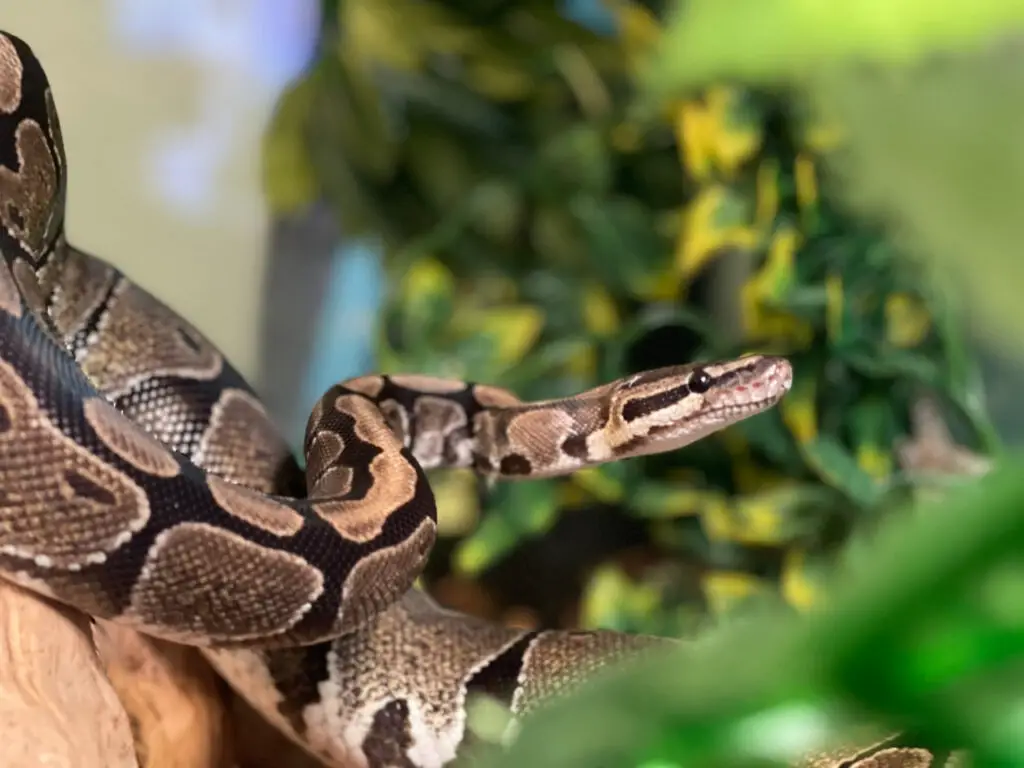
What Is the Best Heating Setup for My Python’s Vivarium?
Creating the perfect habitat for your python can be a delicate balancing act, but it is essential to ensure your pet’s health and happiness. To replicate nature as closely as possible, it is crucial to establish a thermal gradient within the vivarium, separating the hot and cold ends and creating day and night periods.
Light sources should only be present during the heat coming the day, and the temperature should drop at night, mimicking the natural cycle. However, it is vital to keep in mind that heat sources can be dangerous for your python, creating a potential burn risk. Therefore, it is crucial to place them out of your pet’s direct reach, taking all cautionary measures to ensure their safety. With a little effort and care, you can create the perfect habitat for your python to thrive in.
When it comes to providing a suitable environment for your python, heating is one of the most important factors to consider. There are several heat sources available to help keep your snake cozy and comfortable. Heat lamps, ceramic heaters, heat tape, heat mats/pads, and radiant heat panels all offer effective options to regulate the temperature inside your python’s enclosure.
The choice of a heat tape, heat lamp, or source will depend on the average temperature of the room where the enclosure is located and how much heat you need to provide. For heat sources that do not emit any light, such as ceramic heaters and radiant heat panels, it’s important to supplement with an additional light source during the day to maintain a regular day/night cycle. With the right heating setup, your python will be able to thrive in their new home.
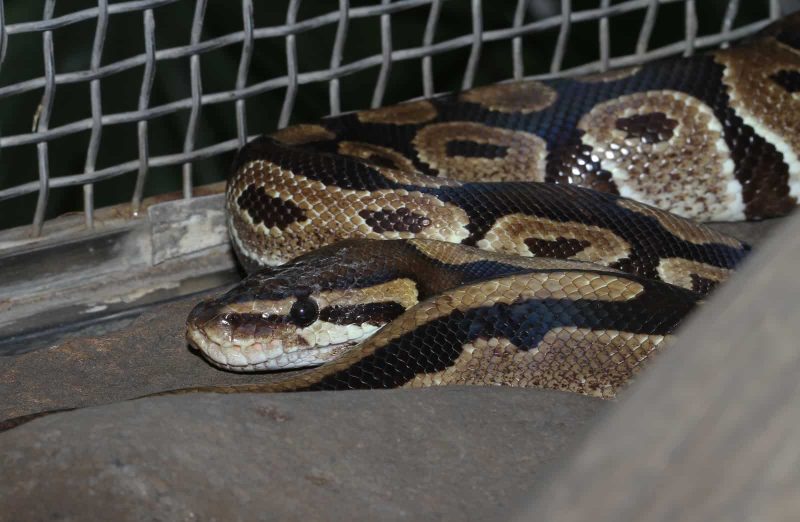
When it comes to providing your pet snake with a warm environment, it’s important to consider what would be natural for them in the wild. In nature, heat typically comes from above, which is why it’s preferable to use a heat source that mimics this. However, if you do need to use a heat mat under tank heater or similar device, it’s important to place it on the back of suitable substrate or the enclosure rather than underneath.
This is because it’s not natural for the temperature to increase as you dig down in the ground, which is where many snakes burrow to escape the heat or cold end of the day. Additionally, placing a heat mat underneath the substrate or enclosure can be dangerous as it can cause burns. By providing your pet snake with the right type of heat source and placement, you can help to ensure that they are happy and healthy in their environment.
As a ball python owner, ensuring the right temperature inside their vivarium should be a top priority. Heat sources can definitely help keep the ball python tank temperature consistent, but it’s not enough. Without a thermostat to regulate the heat, your ball python’s vivarium may end up too hot side too warm or too cold, which can be harmful to your pet’s health. So, make sure to connect your heat sources to a reliable thermostat to maintain the optimum temperature range for your ball python.
Additionally, placing thermometers at both the warm end and cool ends of the ball python tanks enclosure allows you to monitor the temperature gradient in real-time. This way, you can make immediate adjustments if needed to ensure your ball python feels at home inside their vivarium.
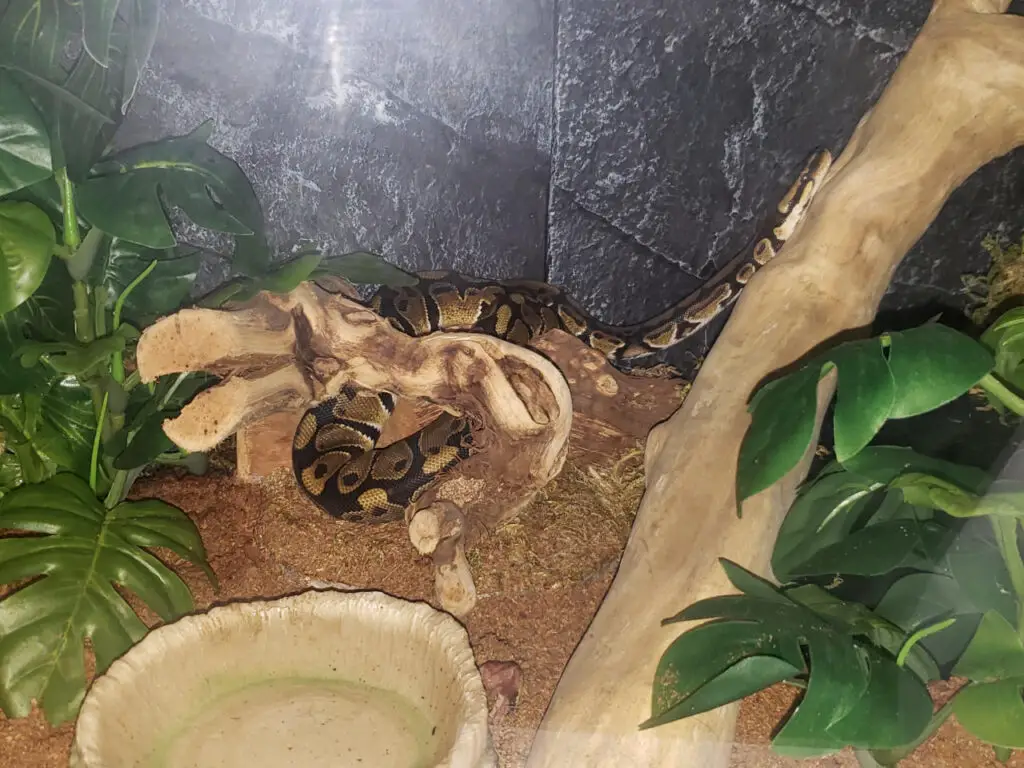
What Is the Ideal Humidity for a Ball Python?
If you want to keep your ball python in good health, controlling the relative humidity level in its enclosure is a must. Aim for a relative humidity of between 60% and 70%, and use the necessary means to achieve it.
The substrate you choose, the ventilation you install, and the size of the water bowl all play a role in keeping the moisture level in check. Don’t forget to mist the ball python enclosure when needed and use a hygrometer to monitor the relative humidity almost daily. Your snake will thank you for providing a comfortable and healthy habitat to live in. Getting this right is necessary to help your ball python thrive!
To keep your python comfortable, it’s important to create a moist hide inside their enclosure. By heating pad, a water dish filling it with sphagnum moss and keeping it clean and damp, your python will have a warm end cozy and humid spot to retreat to. This will come in handy during shedding season as it provides added moisture to help your serpent molt smoothly.
Do Ball Pythons Need to Be Misted?
As a ball python owner, you may wonder how to keep your pet comfortable, especially when it comes to maintaining humidity and levels in the enclosure. Misting is one way to increase the moisture in the air, but it’s not always the only option.
Did you know that the average humidity in household rooms is typically between 30% and 50%? While it may seem surprising that this is still too low for ball pythons, it’s important to take measures to ensure their environment is up to par. Keeping your ball python’s enclosure at a healthy humidity level is essential to their health and well-being. So, whether you choose to mist or use other techniques, be sure to prioritize maintaining a comfortable and suitable living space for your beloved reptile.
If you’re thinking about keeping a python as a pet, there are certain factors you need to consider to ensure they thrive in their environment. One important aspect is the substrate you use. Orchid bark is a good choice as it helps with moisture retention and encourages natural behaviors like burrowing.
Providing a water bowl is also crucial for their overall health, but it’s important to strike a balance with ventilation more humidity. Too much ventilation can result in all the moisture escaping, leaving your python in a dry environment. Checking the humidity levels in your vivarium is key, and misting can help if levels aren’t quite where they need to be. But make sure not to overdo it – too much humidity or misting can be just as harmful. With a mindful approach to the environment you create, your python will be a happy and healthy pet.
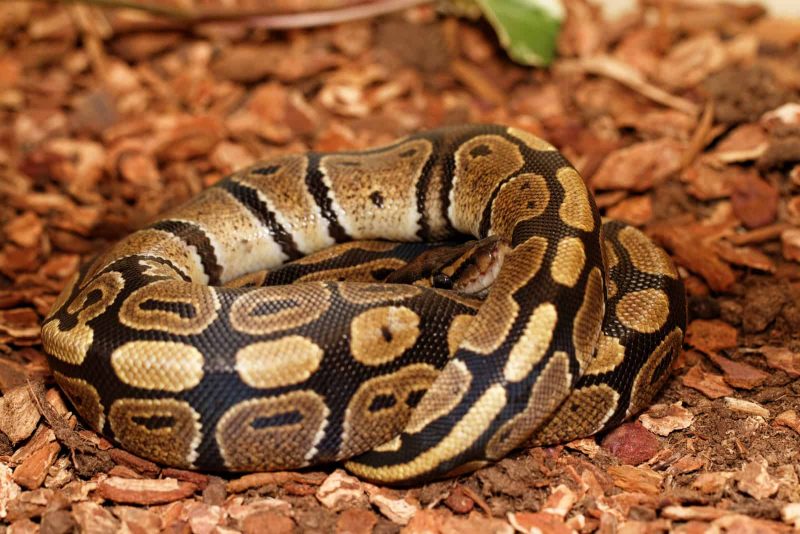
How High Is Too High Humidity for Ball Pythons?
Ensuring the right humidity level is essential when it comes to keeping a ball python as a pet. Despite the ball pythons and their love for moist environments, it is crucial to maintain the humidity level below 70%.
Excessive moisture in a vivarium can lead to respiratory infections, which is why it is essential to constantly monitor the ambient air temperature and humidity levels. Maintaining the right environment and maintaining humidity, is crucial in keeping your ball python happy and healthy. With the proper care and attention, ball pythons can live a long and lustrous life, making them wonderful and fascinating pets.
As a python owner, it is crucial to understand the impact that humidity levels can have on your pet’s well-being. High humidity can be a breeding ground for harmful bacteria and fungi, while low humidity can lead to dehydration and respiratory issues. However, it’s also important to be aware of the dangers of excess moisture.
When humidity levels are too high, the substrate in your python’s enclosure can become saturated, leading to the development of scale rot. Regular monitoring of the humidity levels in your python’s enclosure and making necessary adjustments can ensure a healthy and happy pet. Don’t let too how, too much humidity, moisture, low humidity, or a preventable issue like scale rot harm your beloved snake – take control of your python’s environment today.
Caring for your ball python can be a real challenge, especially when it comes to regulating the humidity inside its enclosure. If that humidity starts to climb too high, your pet may begin to suffer from scale rot or respiratory infections. Luckily, there are some simple steps you can take to keep your ball python healthy and happy.
Consider changing the substrate to one that absorbs moisture more effectively, reducing the size of the water bowl or increasing the ventilation in the ball python enclosure itself. And if you suspect your snake is already suffering from scale rot or a respiratory infection, be sure to check out our article on ball python health for expert advice and guidance. With a little extra attention and care, you can keep your ball python thriving for years to come.
Note
As a Ball Python owner, it is important to understand the needs of your snake during shedding. One crucial factor to keep in mind is humidity. During this process, it is perfectly safe to increase the level of humidity to 80%. This amount increase humidity might seem like a high level of moisture, but it is necessary to have excessive humidity to help your snake shed its skin properly.
However, once the shedding is complete, make sure to lower the humidity back to below 70%. This will ensure your Ball Python remains healthy and happy in their enclosure without shedding problems. By providing ball python temperature the proper conditions for shedding, you are ensuring your pet’s well-being and giving them the best chance for a successful transformation.
Should I Increase the Humidity When My Ball Python Is Shedding?
Shedding is a natural process for ball pythons, but sometimes it may need a little bit of assistance. Increasing the humidity level in their enclosure could be a simple solution for your ball python requires it’s bad shed or regular struggles.
However, bear in mind that over-humidifying the enclosure could lead to bacterial and fungal growth, which could cause more problems than it solves. Only increase the ball python enclosure’s humidity up to a maximum of 80% during shedding and for a short period of time. This method should not be regularly used or for extended periods, as it puts the python at risk of infections. Check out our article on ball pythons thrive and python shedding for more tips on caring for your python.
As a snake owner, it can be overwhelming to navigate through the numerous sources of information on the internet when it comes to maintaining the temperature and humidity of your snake’s enclosure. Understanding the ideal conditions for your pet can make all the difference in their well-being and overall health.
Lucky for you, this article is here to simplify the process and provide you with clear instructions on how to properly regulate your snake’s habitat. Whether you’re a beginner or an experienced owner, we’ve got you covered. And if you still have any lingering questions or concerns, don’t hesitate to drop a comment below. Our team is always here to help you ensure your snake is living its best life.
Does my ball python need a humidifier?
As a Ball Python owner, ensuring the proper humidity for your pet is crucial to their health and well-being. These fascinating creatures typically thrive in a humidity range of 60 to 70%, and increase humidity which can be controlled through substrates, ventilating water bowls, and misting.
Ongoing monitoring is essential and measuring humidity with hygrometers is highly recommended. With a little bit of effort and attention, you can both lower humidity and create the ideal environment for your Ball Python to flourish in. Happy snakes make happy owners!
How do I keep my ball python humidity up?
As the weather begins to cool down, it’s essential to make sure your living space is adequately heated. Increasing the temperature may be necessary for both comfort and health reasons. If you’re looking to maximize the heat in a room, consider using a big shallow bowl that will help to raise humidity and moisture levels while increasing air exchange. It’s also recommended that ventilation holes be partly covered to keep in heat, and dust be added to help absorb any moisture in the air.
By attending to these details, you’ll be able to create a warm and welcoming space that’s perfect for relaxing on those chilly days.
Can I use a regular humidifier for my snake?
When it comes to keeping snakes as pets, there are quite a few things to consider. One of the most important aspects is providing a comfortable and humid environment for your scaled friend. That’s why some snake owners opt to build their own enclosures, like the one described here. However, maintenance is key.
Not only does the humidifier need regular cleaning, but many people may not be aware that the hose running from room humidifier through screen top of the enclosure also requires cleaning. It may be easy to overlook, but neglecting to do so could lead to health issues for your pet. So, while snakes may not be for everyone, for those who do choose to take on the responsibility, it’s important to stay informed and stay on top of the details.
Is 70% humidity too high for a ball python enclosure?
Ball pythons most snakes are fascinating creatures with unique needs, and one of the most important factors to consider is humidity. In their native range, these snakes are used to humidity as low as 55% to 70%. However, for pet ball pythons, the ideal humidity should be around 50% to 65%.
These specific levels of humidity are crucial for ball pythons tank them to be able to dry up and shed their skin easily. By maintaining the right levels of humidity box because of insufficient humidity, you can help prevent respiratory infections and other health issues in your pet ball python. So, whether you’re a seasoned snake owner or a first-time pet parent, understanding the importance of humidity is essential for keeping your ball pythons or python healthy and happy.
Is a mister good for ball python tank?
When it comes to caring for pet reptiles like Pythons, there are various methods to maintain their natural habitat it’s humidity levels. One approach that has gained popularity among reptile enthusiasts is using a fogger or mister. However, this method might not be the best fit for Pythons.
The recommended method for achieving the right humidity range for their cages is by setting them at intervals. This way, you can ensure that your pet Python stays comfortable and healthy, with a natural habitat, that mimics their natural environment. So, remember to set the intervals for your Python’s cage and provide them with a cozy and stress-free space to thrive.
Read more: Can you air purifier and fan at the same time?

